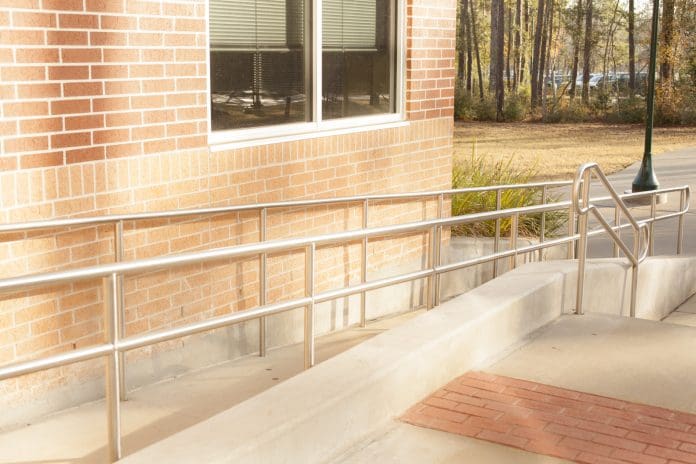A school recently advised a parent that their child, who used a wheelchair, could not be offered a place because the buildings were unsuitable due to not having an accessible loo, and they did not have the funds to provide one
There may well be rather more to the case, but it resonated with a study we did around the needs of a student who uses a wheelchair and was moving up through the year groups at his school.
The school operates on the basis of each school year being located within its own building. It sits on a very steep site, with the result that, with the building this particular student was due to progress, to you enter at one level but as you proceed through the building you find yourself on another floor because of the slope.
Making school buildings accessible for a wheelchair user
At one point you have to negotiate some steps, and our role was to look at how that area might be made accessible to a wheelchair user. The steps can’t be removed because they are integral to the construction of the school. We looked at putting in a ramp but the required length would be too great and the finished product would cut across a set of double doors leading to the staircase. The extra length would also have meant the ramp obstructing a toilet door, so we had to look at other options.
One of them was the provision of an external lift which could also have connected to a high level enclosed walkway to an adjacent building and which, subject to meeting certain conditions could be used for emergency evacuation.
Another option to consider was that for this year group the students who would normally move across to this building use an accessible alternative for a year.
Planning permission for accessible adjustments
The initial problems were compounded by the fact that the school left it so late before dealing with the matter that they would probably have struggled to get planning permission and then complete the work in the time frame they had. It underlines the importance of thinking about these things early.
An additional issue arose with an accessible loo in the entrance hall at upper ground floor level. When we looked at it we found it was peninsula style. They are not intended for independent use because people are unable to take support from an adjacent wall and any fittings, such as grab rails, which provide assistance.
This one had been installed as an accessible loo without a proper understanding of the designs of different facilities, and we also found there was a general dearth of accessible WCs within the school site.
Making school buildings accessible under the Equality Act 2010
What we didn’t find, thankfully, was any belief or suggestion that a school might be exempt from the provisions of The Equality Act 2010.
It is against the law for a school or education provider to treat disabled students unfavourably. Among the examples set out by the government are a refusal of admission to a student or the exclusion of a student because of their disability. Another is indirect discrimination, such as only providing application forms in one format which may not be accessible.
Citizens Advice reminds people that schools have a duty to make reasonable adjustments across the board – admissions, exclusions, trips, in school and with learning activities and materials.
Factors which may be considered include cost, practicality and the school’s resources as well as the impact of any reasonable adjustments of the health and safety of others.
Duty to make school buildings accessible with reasonable adjustments
It’s worth noting also that the duty to make reasonable adjustments in education is anticipatory – schools must consider in advance what they need to do to make sure all disabled pupils can access and participate in the education and other benefits, facilities and services they provide. And the school must pay if they make reasonable adjustments. They cannot pass on the charge to the disabled person.
Even more noteworthy of course is the fact that accessibility in schools isn’t just an issue for students. The management of a school can never be certain who is going to come through the door and expect to be able to use the facilities.
If the premises are inaccessible for that student they are also likely to be be inaccessible to other people – staff, governors, other students and their families, general visitors, even Ofsted inspectors!

















